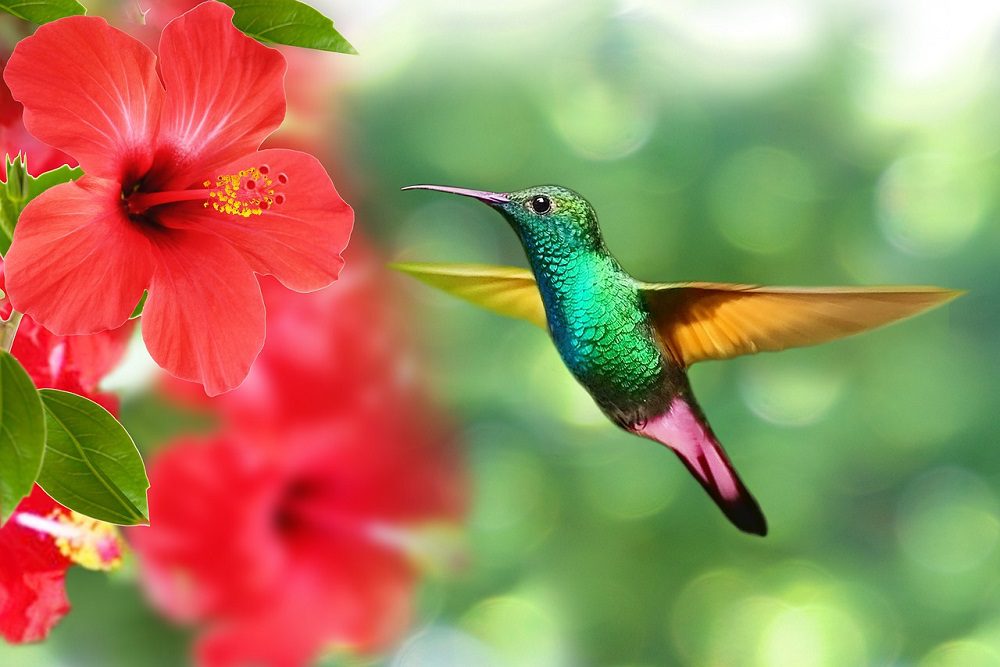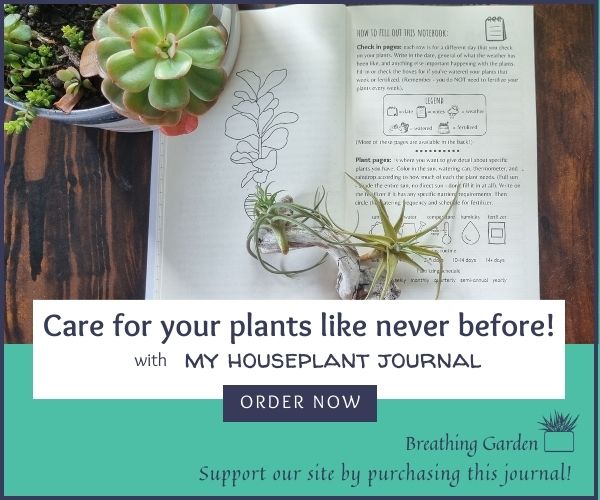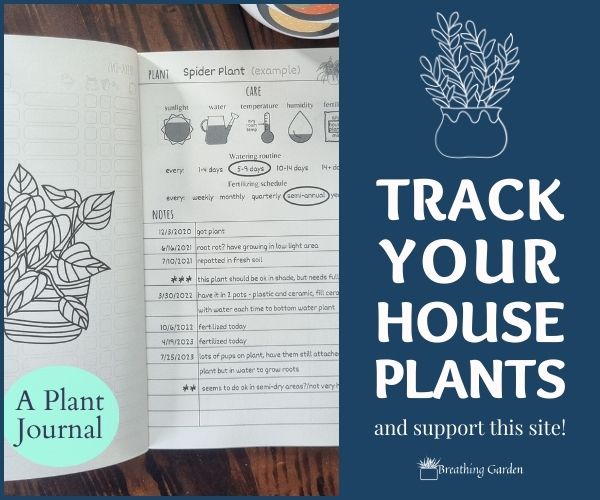Do hummingbirds like hibiscus? Yes! Hummingbirds and hibiscus go hand in hand in gardens. Hummingbirds are such a beautiful bird that are mesmerizing to watch flitter around flowers in your garden! It’s hard to imagine why you wouldn’t want to just watch hummingbirds all day long. If you’re like me and want to see these birds flitting around my garden, try growing hibiscus!
*This post may include affiliate links. When you purchase items from these links, we will receive a small commission, at no extra cost to you, to help support this website. Thank you for your support! Read more ->
Do hibiscus flowers attract hummingbirds? Yes! Hummingbirds love hibiscus.
Hibiscus and hummingbirds just seem to go together. The hibiscus flower is a bright color that’s almost made for a hummingbird to take nectar out of, and attract other pollinators to the garden. And since hibiscus flowers constantly throughout summer, you’re sure to have hummingbirds coming back for more nectar.
Do Hummingbirds Like Hibiscus?
Yes! Hummingbirds do like hibiscus. They are bright colors, have many flowers and flower often, and have a tasty nectar for the hummingbirds to eat. Growing hibiscus is sure to attract hummingbirds to your garden.
What Do Hummingbirds Like About Hibiscus?
Hibiscus flowers are almost made for hummingbirds to easily access nutrients, so there’s not much hummingbirds don’t like about this flower. Some of the best aspects include the shape of the flower, the stamen/stigmas, the sweetness, and the blooming season!
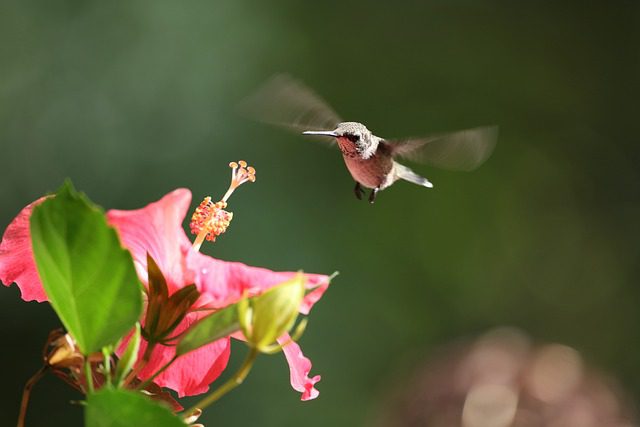
Shape of The Flower
The shape of the hibiscus flower is ideal for hummingbirds. The flowers tend to have 5 petals, and once open, they round back on themselves, or can be tube shaped depending on the type. This makes for easy access for a hummingbird to stick their beak inside and suck up the nectar while easily hovering outside the flower. The flowers can be anywhere from 4-20 cm across.
Stamen/Stigmas
The stamen/stigmas (depending on if it’s a male or female flower) are the part that sticks out from the middle of the flower. The nectar is located at the base of this. This is fairly easy to get to for a hummingbird with their long beak and tongue, since it’s a long narrow tube.
Sweetness
The main part of a hummingbird’s diet is nectar, and hibiscus flowers have ample nectar. This is why hummingbird feeders are a sugar water solution – it’s what they love to eat! So getting nectar from a plant with ample flowers is sure to keep bringing hummingbirds back to your garden day after day.
Blooming Season
The hibiscus will bloom at least throughout summer, and depending on the type you have, can bloom from late spring to the first frost, or even year round (in tropical environments). And there are new flowers blooming every day so there’s ample food for hummingbirds.
Does It Matter Which Type/Color Hibiscus For Hummingbirds?
There are two primary different kinds of hibiscus, which are the tropical and perennial varieties. Hummingbirds like both varieties! Both have a similar shape flower, and have plenty of nectar. (Read further down about the differences and which is best for you to grow in your garden!)
What about color for do hibiscus attract hummingbirds? Hummingbirds are most attracted to red, but like most vibrant colors.
So if you’re really trying to attract hummingbirds, try to choose a red hibiscus flower to plant. But they’ll likely enjoy any of the other colors hibiscus comes in. Better yet, grow multiple hibiscus plants in your garden, each a different color! This way you’ll be able to get beautiful flowers of different colors and see for yourself which color the hummingbirds are most likely to go for.
What Else Does Hibiscus Attract?
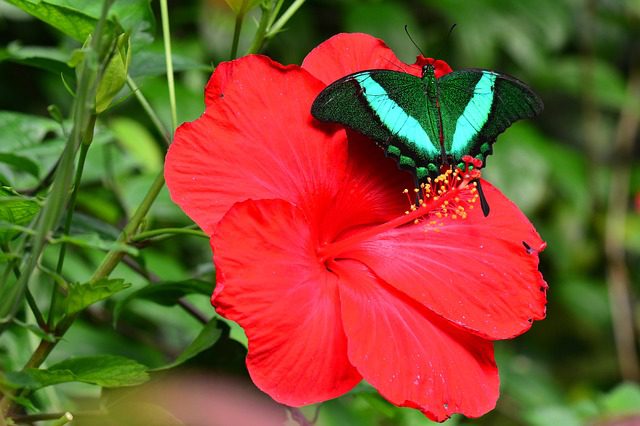
So now that we’ve covered do hummingbirds like hibiscus, let’s talk about what else hibiscus attracts! Hibiscus is really popular with many pollinators, so it will also definitely attract butterflies to your garden while they’re also sucking up some nectar! Hibiscus will also attract bees, which can be helpful if you’re trying to have other flowers pollinated in your garden.
Pests it Attracts
While most of the things hibiscus attracts to your garden are good, it can also become infested with aphids or spider mites. Make sure to keep an eye out for these pests so you can get rid of them as soon as you see them.
Find out how to get rid of aphids here.
Caring For a Hibiscus Plant
It’s no good to the hummingbirds (or you) if your hibiscus plant dies or isn’t flowering! So let’s discuss how to care for a hibiscus plant. There are two different types of hibiscus plants, tropical, and perennial. And each have slightly different care needs.
Tropical Hibiscus
If you grow a tropical hibiscus, know it probably won’t survive a frost. So if you’re planning on growing this and live in an area that freezes in the winter, it’s either best to grow it in a container that you can bring inside for winter, or accept that it’s an annual that you’ll have to replace every spring.
This plant needs at least 2-3 direct hours of sunlight a day (more if you’re in a colder, wetter climate). If you live in a tropical area, can grow up to 24 inches a year and will bloom all year long. If you live elsewhere, expect flowers throughout summer on this tropical hibiscus plant.
Make sure to grow it in well draining soil, so that it doesn’t succumb to root rot, and prune at the end of the season. Especially give it a hard pruning if you’re bringing it inside for the winter. When it’s inside, it still will need 2-3 hours of sunlight and frequent, small waterings.
Perennial Hibiscus
The perennial hibiscus is no less beautiful than the tropical hibiscus, but can be a lot easier to care for! This one can withstand winters and will grow back the next year, especially with proper pruning. Make sure to plant this in a full sun area, where you’ll be able to see all of it’s beautiful flowers.
This perennial can have flowers from spring until fall, so you’ll be able to attract many hummingbirds with this hibiscus! This plant will need a lot of watering during the summer, and will need less in the winter. This plant also really likes being fertilized regularly while it’s flowering, especially with a phosphorus or potassium fertilizer.
Other Ways To Bring Hummingbirds Into Your Garden
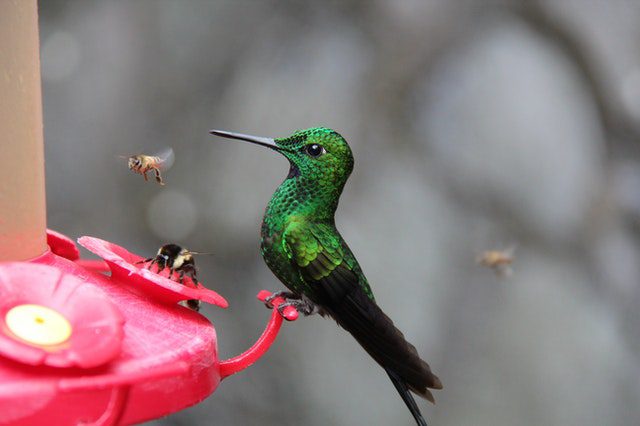
If you’ve got your hibiscus growing, but no hummingbirds are coming to your garden, it’s time to try luring them in with more tools! You can always get a hummingbird feeder, which is easy to maintain and they’ll be able to find it easily.
And you can have a bird bath to help attract them. They especially prefer ones with a fountain to get a little spray to wash off with.
What About Keeping Hummingbirds Away From Hibiscus?
While if you’re reading this article, you’re probably looking for ways to attract hummingbirds to your garden, but you may also want to keep them away from your hibiscus! Especially if you want to use the flowers yourself!
The flowers and calyxes of this plant are edible, and if you’re wanting to eat them, you may not want to be sharing the plant with a hummingbird! Some ways to keep the birds away from your hibiscus can include having a feeder somewhere that’s more appealing to the hummingbird, or faking them out with fake plants around your hibiscus.
You can also make sure they don’t have anywhere to rest/perch near the plants. Especially if you see them perching on one branch often, just remove that branch to keep hummingbirds away.
Conclusion
Hummingbirds and hibiscus seem to go together, at least compatibility wise! The hibiscus provides nutrients for the hummingbird, and is an ideal shape for them to eat out of. Definitely consider growing hibiscus if you’re trying to attract hummingbirds into your garden! Even better, have it planted near a window so you can watch the hummingbirds all summer long. Be sure to check out some other beautifu lfowering plants like the hydrangea or dahlias!

